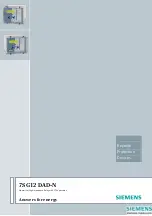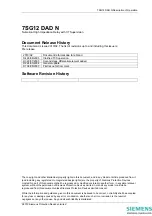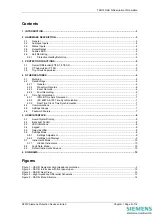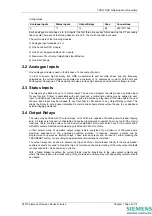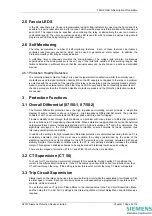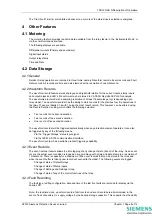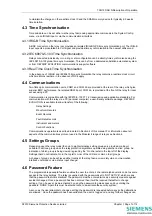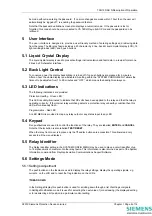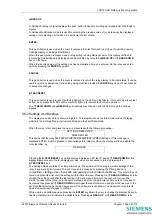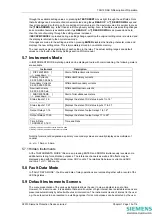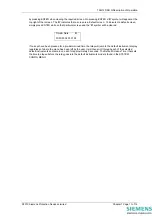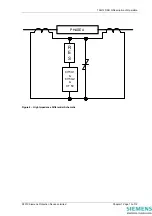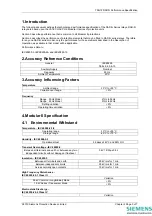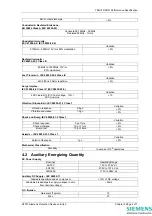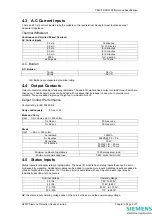
7SG12 DAD N Description of Operation
Configuration :
Analogue Inputs
Status Inputs
Output Relays
Case
Connections
3 11
13 E8
2621W11006
Each analogue module has up to four inputs; the first three are usually for measuring the CT secondary
line currents from each of the three phases A, B and C. The fourth channel is not used.
The unit consists of the following modules:
1) Analogue Input modules (4 x I )
2) One Controller CPU module
3) One Power Supply and Basic I/O module
4) Maximum of Four Output relay/Status Input Module
5) One Front Fascia
2.2 Analogue Inputs
One analogue module is used in the E8 case of 3 channels of current.
In order to ensure high accuracy true RMS measurements and accurate phase and slip frequency
calculations, the current signals are sampled at a minimum of 16 samples per cycle for both 50Hz and
60Hz system frequencies. This sampling rate also provides high accuracy and waveform storage records
2.3 Status Inputs
The relay may be fitted with up to 11 status inputs. The user can program the relay to use any status input
for any function. A timer is associated with each input and a pickup time setting may be applied to each
input. In addition each input may be logically inverted to allow easy integration of the relay within the user
scheme. Each input may be mapped to any front Fascia LED and/or to any Output Relay contact. This
allows the Relay to act as panel indication for alarms and scheme status without having to use additional
external flagging elements.
2.4 Output Relays
The relay may be fitted with 13 output relays, all of which are capable of handling circuit breaker tripping
duty. All relays are fully user configurable and can be programmed to operate from any or all of the control
functions. There are three relays on the Power Supply/Basic I/O module which have C/O contacts and 2
with N/O contacts. Additional modules may are fitted with 8 N/O contacts.
In their normal mode of operation output relays remain energised for a minimum of 100msec and a
maximum dependent on the energising condition duration. If required, however, outputs can be
programmed to operate as latching relays. These latched outputs can be reset by either pressing the
TEST/RESET button, or by sending an appropriate communications command.
The output relays can be used to operate the trip coils of the circuit breaker directly if the circuit breaker
auxiliary contacts are used to break the trip coil current and the contact rating of the relay output contacts
is not exceeded for 'make and carry' currents.
With a failed breaker condition the current 'break' may be transferred to the relay output contacts and
where this level is above the break rating of the contacts an auxiliary relay with heavy-duty contacts should
be utilised.
©2010 Siemens Protection Devices Limited
Chapter 1 Page 4 of 14
Summary of Contents for 7SG12 DAD-N
Page 2: ......

